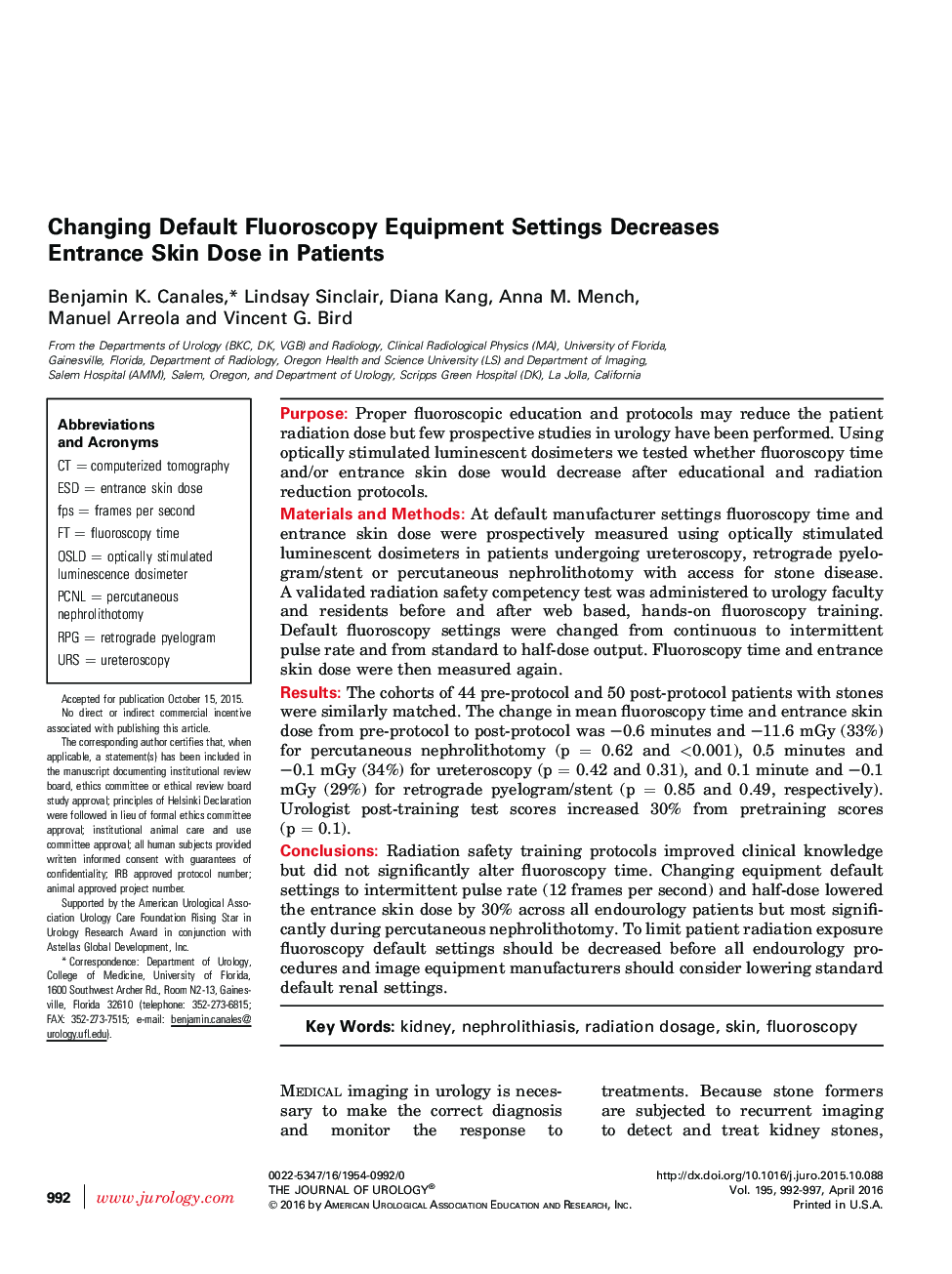| کد مقاله | کد نشریه | سال انتشار | مقاله انگلیسی | نسخه تمام متن |
|---|---|---|---|---|
| 3858553 | 1598878 | 2016 | 6 صفحه PDF | دانلود رایگان |
PurposeProper fluoroscopic education and protocols may reduce the patient radiation dose but few prospective studies in urology have been performed. Using optically stimulated luminescent dosimeters we tested whether fluoroscopy time and/or entrance skin dose would decrease after educational and radiation reduction protocols.Materials and MethodsAt default manufacturer settings fluoroscopy time and entrance skin dose were prospectively measured using optically stimulated luminescent dosimeters in patients undergoing ureteroscopy, retrograde pyelogram/stent or percutaneous nephrolithotomy with access for stone disease. A validated radiation safety competency test was administered to urology faculty and residents before and after web based, hands-on fluoroscopy training. Default fluoroscopy settings were changed from continuous to intermittent pulse rate and from standard to half-dose output. Fluoroscopy time and entrance skin dose were then measured again.ResultsThe cohorts of 44 pre-protocol and 50 post-protocol patients with stones were similarly matched. The change in mean fluoroscopy time and entrance skin dose from pre-protocol to post-protocol was –0.6 minutes and –11.6 mGy (33%) for percutaneous nephrolithotomy (p = 0.62 and <0.001), 0.5 minutes and –0.1 mGy (34%) for ureteroscopy (p = 0.42 and 0.31), and 0.1 minute and –0.1 mGy (29%) for retrograde pyelogram/stent (p = 0.85 and 0.49, respectively). Urologist post-training test scores increased 30% from pretraining scores (p = 0.1).ConclusionsRadiation safety training protocols improved clinical knowledge but did not significantly alter fluoroscopy time. Changing equipment default settings to intermittent pulse rate (12 frames per second) and half-dose lowered the entrance skin dose by 30% across all endourology patients but most significantly during percutaneous nephrolithotomy. To limit patient radiation exposure fluoroscopy default settings should be decreased before all endourology procedures and image equipment manufacturers should consider lowering standard default renal settings.
Journal: The Journal of Urology - Volume 195, Issue 4, Part 1, April 2016, Pages 992–997
